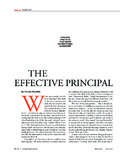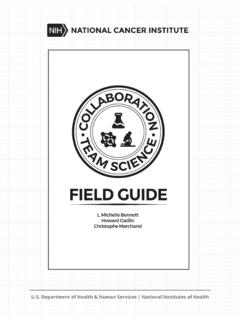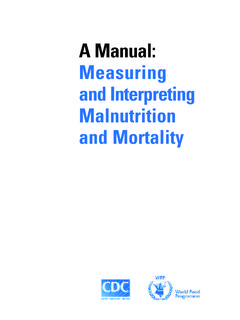Transcription of High-quality collaboration benefits teachers and students
1 62 JSD | October 2015 | Vol. 36 No. 5lessons from research JOELLEN KILLIONWHAT THE STUDY SAYSU sing sophisticated statistical analyses, researchers examined individual teacher-level and school-level collaboration to understand the nature and effects of teacher-to-teacher collaboration in instructional teams. When teachers engage in High-quality collaboration that they perceive as extensive and helpful, there is both an individual and collective benefit. High-quality collaboration in general and about assessment in particular among teachers is associated with increases in their students achievement, their performance, and their peers students achievement. Study descriptionThe research study examined teacher collaboration practices in 336 Miami-Dade Public Schools between 2010 and 2012 and involved over 9,000 teachers .
2 Researchers used teacher surveys to collect descriptive data about teachers collaboration practices. Through statistical analyses using district- and school-level data about teacher characteristics, teacher value-added test results, school characteristics, and student achievement, researchers explored the interactions among multiple variables using multiple models to identify findings and explore appropriateness of alternative explanations. QuestionsThe research study centers on two sets of questions. The first set, based on the descriptive study of the survey data, includes: What kinds of instructional collaborations exist in the urban school system studied? Do teachers perceive collaboration in certain instructional domains to be more extensive or helpful than others?
3 How much variation in collaboration quality exists within and between schools? Is the quality of teacher collaboration associated with student achievement and teacher improvement with experience?The second set of questions, based on the analytic study of the interaction among teachers , schools, and collaboration , addresses these questions: Do different kinds of schools have different kinds of instructional collaboration ? Is the average quality of faculty collaboration associated with school achievement? Is a teacher s own collaboration quality or the average collaboration quality of her colleagues associated with her students achievement? Do teachers improve at greater rates in schools with greater collaboration ?MethodologyResearchers employed two types of data: teacher survey data from a prior extensive survey about teacher collaboration and district and administrative data about teacher demographics, performance, role-specific indicators, experience, their student demographics, test scores, and school indicators.
4 High-quality collaboration benefits teachers and students Joellen Killion is senior advisor to Learning Forward. In each issue of JSD, Killion explores a recent research study to help practitioners understand the impact of particular professional learning practices on student a glanceThe quality of teacher collaboration positively influences teacher performance and student STUDYR onfeldt, M., Farmer, S., McQueen, K., & Grissom, J. (2015). Teacher collaboration in instructional teams and student achievement. American Educational Research Journal, 52(3), 2015 | Vol. 36 No. 5 | JSDlessons from research JOELLEN KILLIONT eacher survey data were extracted from over 9,000 surveys for a larger study of school leaders over two years with a response rate of 36% and 39% in 2011 and 2012 respectively focusing on questions related to the extensiveness and helpfulness of different kinds of collaboration within their instructional teams.
5 A considerably smaller number of teachers was included in the full analysis of reading (667) and math (544) achievement due to the amount of available value-added data. Researchers used multiple models and analyses to examine and dispute alternative explanations for their findings. AnalysisThrough statistical analyses of the survey results, researchers determined the types, extent, and degree of helpfulness of teacher collaboration . Four types of collaboration were identified: general ( classroom management) and three instruction-specific ones (instructional strategies and curriculum; students ; and assessment). Quality of teacher collaboration is measured as teacher perception of the extent and helpfulness of statistical analyses of the interactions among various teacher and school characteristics answered the research questions.
6 Researchers employed multiple models to examine alternative explanations and to strengthen the potential for WHAT THIS MEANS FOR PRACTITIONERSB ecause many school and school system leaders and policymakers advocate and support teacher collaboration as a means to improve student achievement, this study is significant to understand more deeply how the nature and extent of collaboration , teacher characteristics, and school characteristics interact to affect student achievement. The results of this research study support the continuation of teacher collaboration that is focused, sustained, and perceived as helpful as a productive approach to increasing student success and teacher study illuminates the importance of the Standards for Professional Learning (Learning Forward, 2011) within the practice of and conditions for teacher collaboration .
7 The Learning Communities standard speaks to the impact of collective responsibility for student success, continuous improvement, and shared accountability. Sustained teacher collaboration about instructional strategies, curriculum, students , and assessment, as well as general collaboration is the primary vehicle for continuous improvement of teacher practice, for sharing accountability, and collective responsibility. The Leadership standard addresses the role of leaders in advocating professional learning, creating support system and structures for continuous improvement, and developing capacity to lead and learn. Florida s standards for professional development specify that teachers are expected to participate actively in learning communities.
8 Teacher collaboration requires leaders who are able to cultivate the capacity to collaborate about instruction, curriculum, students , and assessments, create and support instructional teams to maintain engagement in High-quality collaboration , and serve as an advocate of teacher collaboration . While not specifically addressed in the study, it was evident that Resources such as time, staff, and materials were available for sustained teacher collaboration . The Data standard addresses the use of educator, student, and system data to plan, monitor, and evaluate the impact of professional learning. The district invested in developing a data system that links educator and student data for multiple purposes. Teacher collaboration is a powerful Learning Design.
9 This standard emphasizes using active engagement, appropriate learning designs, and application of theories and research on learning. Teacher collaboration is grounded in the social interaction theory of learning and aligns with research on communities of practice, relevance to practice, and collective practice. The Implementation standard stresses sustained support, constructive feedback, and application of change research. This study s focus on teacher collaboration over a two-year period and its examination of the nature and extent of teacher collaboration substantiate the role of teacher-to-teacher continuous learning. The Outcomes standard emphasizes the alignment of teacher performance and student outcomes as the content focus of professional learning and strong coherence among what students learn, what teachers learn, and school and school system goals.
10 In this study, teacher collaboration focused on teachers core responsibilities instruction, curriculum, assessment, and student collaboration , when practiced with a focus on instructional strategies, curriculum, and assessment particularly, has benefits for both teachers and students . Results are even more promising when the collaboration is extensive and perceived by teachers as helpful. collaboration among teachers even influences the results of teachers who do not experience directly the same High-quality collaboration . Researchers conclude, Student achievement gains are greater in schools with stronger collaborative environments and in classrooms of teachers who are stronger collaborators (p. 512).REFERENCEL earning Forward. (2011).









